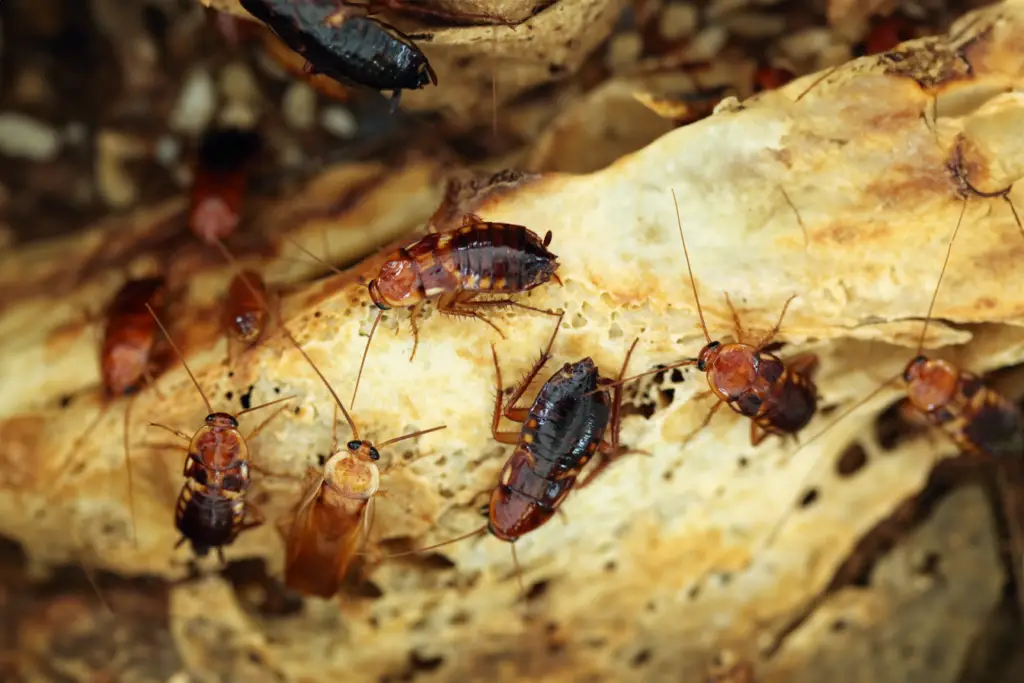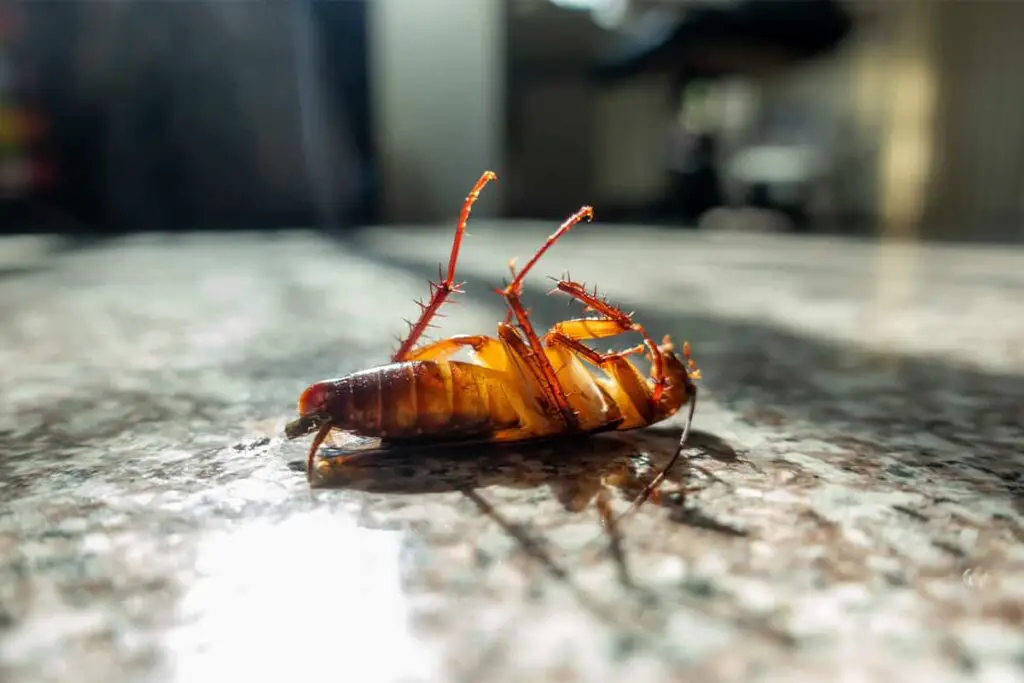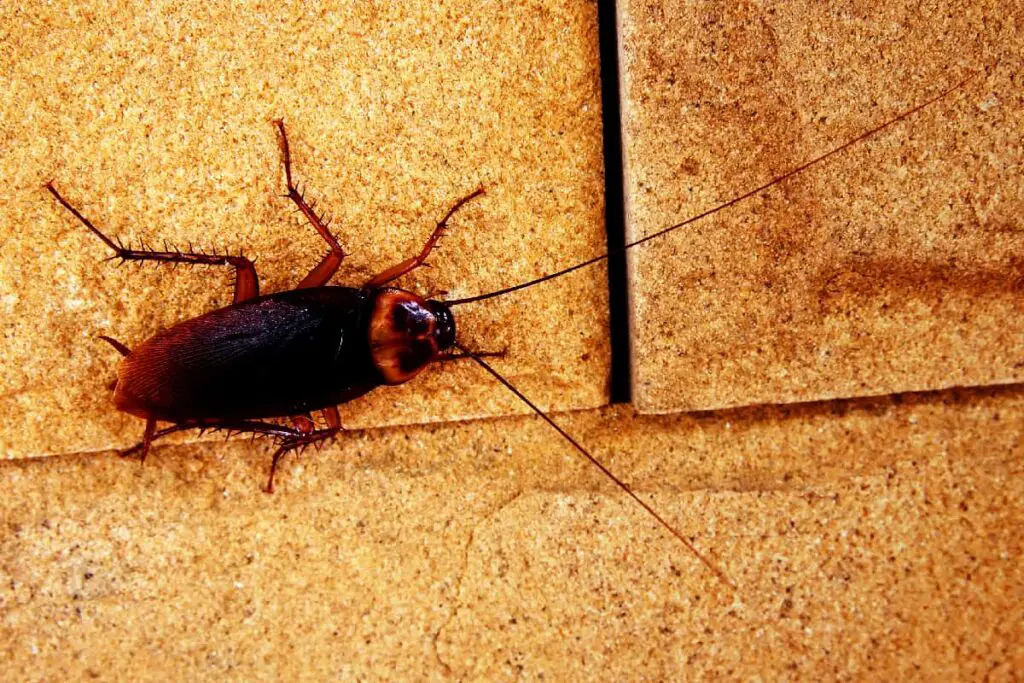
If you’ve ever encountered a pest problem, you might be curious about the early stages of an infestation. Specifically, understanding what baby cockroaches look like can be a crucial step in recognizing and addressing a roach problem before it escalates. Baby cockroaches, or nymphs, resemble their adult counterparts but have distinct differences. For one, they don’t have wings and their coloring is often darker, serving as a camouflage in their environment.
Recognizing these tiny pests is easier when you know what to look for. Baby roaches typically have elongated bodies with long, spiny legs and antennae that can be as long as or longer than their bodies. At birth, a baby cockroach, such as the baby German roach, can be darker in color and measures about 1/8″ long, growing larger with each molt as they develop towards adulthood.
While they may start off quite small, baby cockroaches can quickly become a large problem. Their size can vary depending on the species, with some baby American roaches being larger than the German variety. Early detection and identification are key to preventing a full-blown infestation, so familiarizing yourself with these characteristics is a smart move for any homeowner.
Identification of Baby Roaches
Recognizing baby roaches is the first step in dealing with a potential infestation in your home. The key characteristics to look for include their color and texture, as well as their size and shape.
Color and Texture
When you’re inspecting your space for these pests, baby cockroaches typically hatch out appearing white or light grey, although they will soon darken in color within a few hours. Their texture is notably less glossy than adults, giving them a more matte appearance. The developing exoskeleton is not as hard as that of the mature roaches, which allows for the essential process of molting as they grow.
Size and Shape
In terms of size, baby roaches start off quite small, often less than a quarter of an inch in length, but this can vary slightly between species. As for the shape, they share a similar oval and flattened body that is characteristic of cockroaches, but they will not have fully developed wings like the adults. The absence of wings can be a distinguishing factor when trying to identify baby roaches.
Habitat and Behavior
Understanding the habitats and behaviors of baby roaches is crucial for recognizing infestations and managing them effectively.
Common Habitats
Baby roaches, or nymphs, often inhabit areas that provide warmth, moisture, and a ready food supply. You can typically find them in kitchens, bathrooms, and basements. Look for them in cracks and crevices, under sinks, or near water heaters and plumbing fixtures. Common indoor environments include:
- Behind refrigerators and stoves
- Inside pantries and cupboards
- Beneath floorboards and in wall voids
In urban settings, baby roaches may also dwell in communal spaces such as apartment building laundry rooms or shared bathrooms, where they have access to water and discarded food.
Behavioral Traits
Baby roaches are nocturnal and elusive, preferring to scurry away when exposed to light. They spend most of their time hiding and are known to:
- Feed on a variety of materials, such as food crumbs, glue, waste, or other decaying organic matter
- Remain close to their nesting sites, which are often near sources of food and water
It’s important to note baby roaches can spread bacteria and pathogens by moving through contaminated areas and then exploring kitchen surfaces or food items. Regular cleaning and proper food storage are key in deterring their presence in your home.
Life Cycle and Development
Understanding the life cycle of roaches is crucial if you’re keen on identifying and controlling their presence in your environment. They transition from eggs to full adulthood, undergoing distinct developmental phases.
Egg to Nymph
Roaches begin their life cycle encased in an egg. A single female cockroach can lay an egg case that contains multiple eggs, which can range from 10 to 50 depending on the species. For example, female cockroaches of some species are oviparous, with their eggs developing externally. After the incubation period, the eggs hatch and out come the nymphs.
Growth Stages
Upon hatching, roaches are in their nymph stage. Nymphs are wingless and typically lighter in color, transforming through a series of molts. With each molt, nymphs darken and grow, shedding their exoskeleton to accommodate their larger size. For instance, the bodies of American cockroach nymphs exhibit a banded appearance and only gain wings upon reaching maturity. The nymph stage involves multiple growth phases or instars, which can be as many as fourteen for certain roach species.
Prevention and Control
Effective control of baby roaches hinges on your commitment to maintaining a clean environment and, if necessary, enlisting professional help. These are crucial steps in preventing infestations from taking root in your home.
Sanitation Practices
To keep baby roaches at bay, it’s essential to eliminate their food sources, water, and hiding spots. Start by regularly taking out the trash and keeping it in sealed containers. Store food in airtight containers and avoid leaving pet food out overnight. Fix any leaking pipes to remove sources of moisture which roaches find attractive. Regular sweeping, vacuuming, and wiping down surfaces will reduce crumbs and spills that could feed these pests.
Professional Pest Control
If you’re facing a persistent roach problem, professional pest control may be your best option. Experts can provide targeted treatments to effectively address the infestation. They’ll employ insecticides in forms such as suspended concentrates or gel baits which are more adept at reaching the roaches’ hideouts. These treatments, combined with their knowledge of roach behavior, will help ensure that the baby roaches—and their potential to multiply—are thoroughly addressed.
Frequently Asked Questions
In this section, we’ll cover some of the most common questions related to identifying and dealing with baby cockroaches in your home.
How can you identify a baby cockroach in your home?
You can identify a baby cockroach, or nymph, by its smaller size compared to adults, typically less than an inch long, and its lack of wings. They often exhibit a lighter, white or gray color immediately after hatching but will darken over time.
What are the distinguishing features of baby German cockroaches?
Baby German cockroaches become brown and develop a banded appearance with two dark parallel lines running from the back of the head to the base of the wings. They also showcase a light-colored splotch on their backs.
Why might someone find baby roaches but no adults?
Finding baby roaches without adults could suggest a recent hatching. Adults may not be present if they have died or if the eggs were brought into the home within infested items without the adults.
What steps should you take upon finding baby cockroaches?
Upon finding baby cockroaches, you should clean your home thoroughly, seal cracks and crevices to prevent further entry, and consult professional pest control services for targeted treatment strategies to eradicate them.
How can you differentiate between baby roaches and other similar bugs?
Check the body shape, size, and coloring; baby roaches have a distinctive oval shape, are smaller, and change color after hatching. Other bugs may have different body shapes, patterns, or movement behaviors.
What are some signs that could indicate the presence of baby roaches in your house?
Signs of baby roaches include finding small, oval-shaped insects with a tendency to scurry when exposed to light and the presence of tiny, dark-colored droppings or egg cases (oothecae) in areas like kitchens and bathrooms.
Driven by a passion for those tiny creatures that rule our world, we at Bug Domain strive to be your go-to resource for information on insects.



